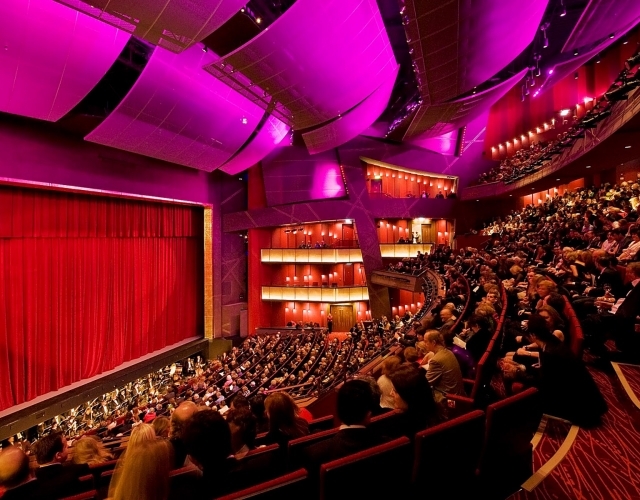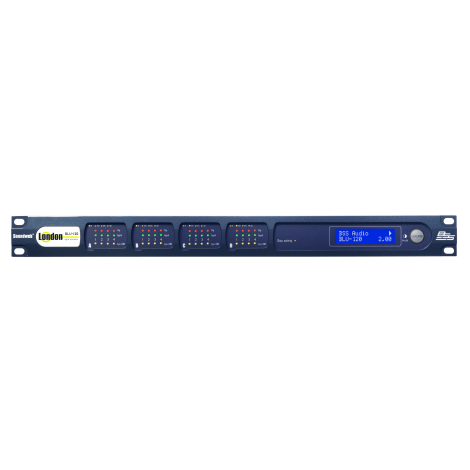Products
BSS Soundweb London has been chosen as the site-wide audio network for Dublin’s new £68m Grand Canal Theatre.
The new 2,111 capacity Grand Canal Theatre in Dublin’s Docklands, which was designed by renowned architect Daniel Libeskind to integrate with the adjoining commercial development, provides an outstanding addition to Ireland’s theatre world.
Since it will not only present the best of national and international theatre, but also musicals, opera, ballet, and classical performance, the new £68m development required a high-octane technical infrastructure that would accommodate world class West End and Broadway productions visiting Ireland for the first time.
The technical fit-out was supervised by LSI Projects, who successfully responded to a tender document and specification created by consultants, Arup Venue Consultants.
One of the challenges faced by LSI’s project manager Jakub Krzeminski, was creating a site-wide digital network which would incorporate an independent four-zone, six-source paging system within BSS Audio’s advanced Soundweb London environment.
His digital building blocks consisted of a pair of Soundweb London BLU-160 configurable, high bandwidth processors, along with a BLU-120 to extend the I/O capacity — and a BLU-BOB2 offering eight further channels of analogue expansion. This would enable the network audio to be distributed between the devices by BSS Audio’s proprietary (and highly cost-effective) BLU-Link protocol, which can deliver up to 256 channels of audio around a redundant loop network without the need to transport via a network switch. In addition BLU-10 remote panel is networked on Ethernet, and there are three wireless access points for laptop control.
Since it will not only present the best of national and international theatre, but also musicals, opera, ballet, and classical performance, the new £68m development required a high-octane technical infrastructure that would accommodate world class West End and Broadway productions visiting Ireland for the first time.
This architecture handles all audio processing in the building, including all input sources and distributed audio, and encompassing the main theatre FOH system control, which is then sent out on AES to the amplifier packs.
Integrating a 4-zone, 6-source paging system (with prioritization), into the Soundweb design had been a prerequisite, according to Krzeminski.
Essentially, the requirement was for any one of LSI’s six custom built microphone paging stations to be able to page to any or all of the four paging zones — at any time (providing another station was not already doing the same). This has been implemented in a 16-in/16-out configuration.
In addition, multiple stations would be able to page to different zones simultaneously if desired, with a ‘zone paging active’ LED arrangement displaying the status of the system at each station. Further controls have been implemented that automatically exclude paging to some zones (for example when a show is active). This was all accomplished using Soundweb’s Logic processing ability.
The LSI project manager admits, “We originally only wanted to use Soundweb for the main PA system — but had second thoughts when we knew what might be possible.
The FOH control matrix is configured 4-in/12-out, routing the signal from the console to the amps with delay control and custom set-ups for the auditorium setups, and at the same time encompassing the stage manager’s desk.
Summing up, Jakub Krzeminski said the scope of the digital network had enabled LSI Projects to achieve everything they wanted and more.
“Soundweb provided us not only with digital processing (gates, compression, filtering) for the sources and ambient noise modules, but the control element was sufficiently flexible to enable analogue style custom paging stations, with four lit buttons on a single CAT5 via resistive ladder on the logic IP’s.
“This enabled us to keep custom paging sources, show relay sources, ambient mics, paging and show relay destinations all within one system — with full processing and routing.”
January 2010
Venue
- Grand Canal Theatre, Dublin
- 2,111 capacity theatre
Project Team
- Installer: LSI Projects










